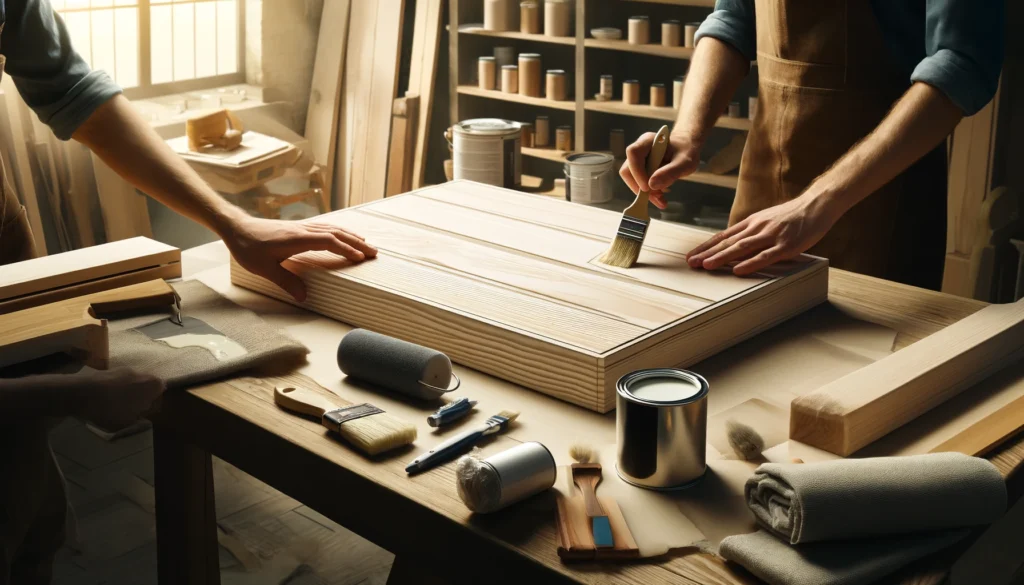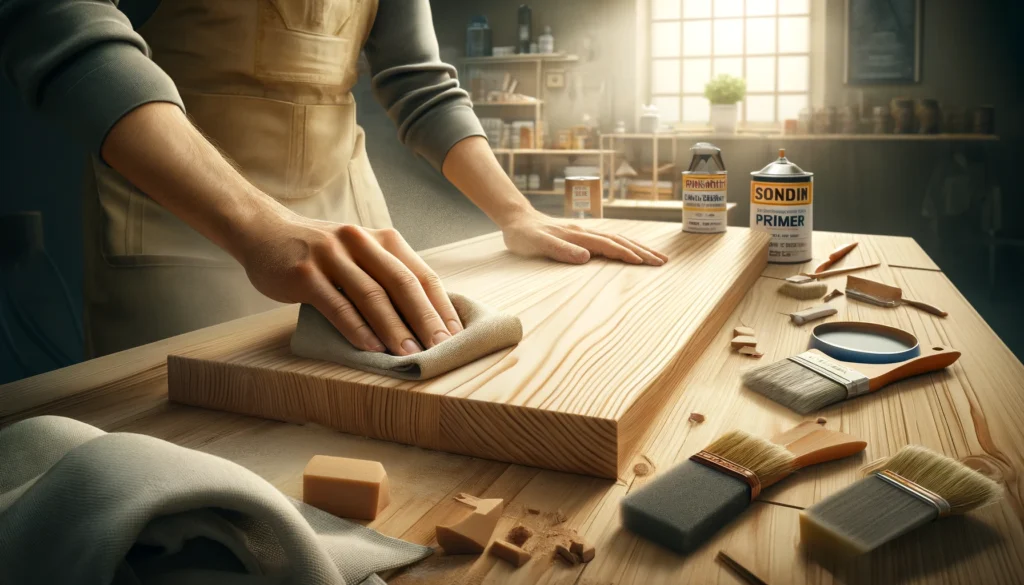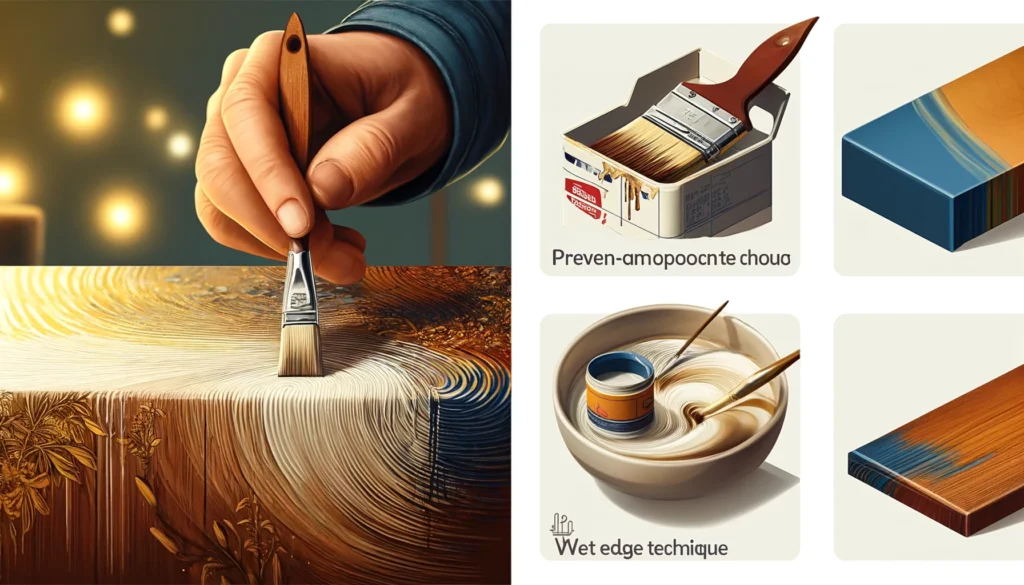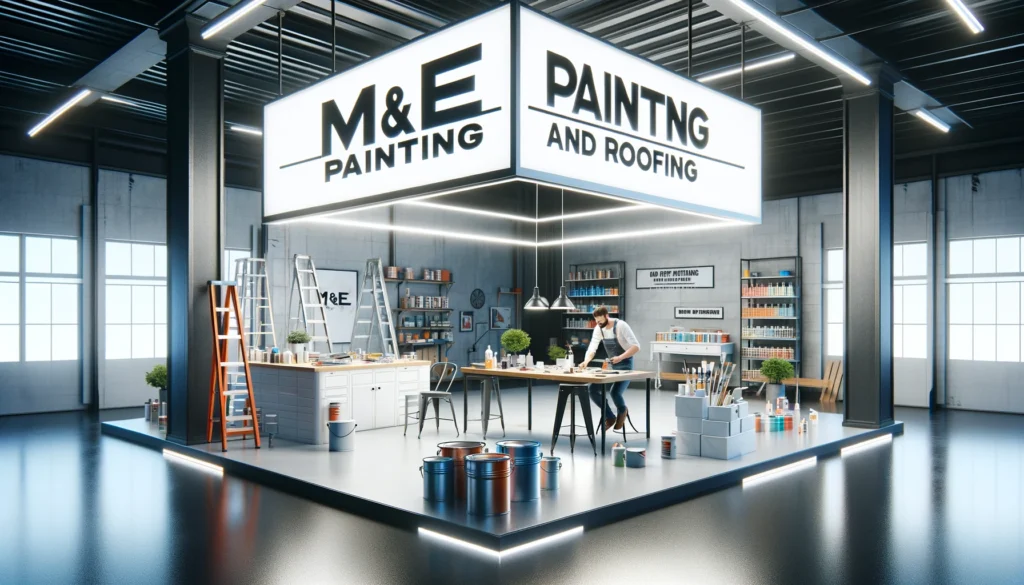
At M&E Painting, our commitment goes beyond mere painting; we aim to transform your spaces in Fort Collins, CO, Windsor, CO, and Timnath, CO, with the enduring beauty of oil-based paint. This guide is crafted not just to assist you but to empower you with the knowledge to achieve a professional finish on wood surfaces. We understand the unique challenges and rewards that come with using oil-based paint, and we’re here to share our expertise to help you manage this process smoothly.
Understanding the Basics of Oil-Based Paint

Oil-based paint is not just any paint; it’s a choice for those who value durability and a classic finish. Its formulation is designed to penetrate wood deeply, creating a bond that stands up to wear and tear, making it the go-to option for high-traffic areas or furniture pieces. Beyond its practical benefits, oil-based paint offers a level of depth and richness in color that is unmatched, providing your projects with a finish that echoes quality and sophistication.
Preparation: The Key to Success

The foundation of a stunning oil-based paint job lies in thorough preparation. A well-prepared surface not only ensures the longevity of your paint but also enhances its aesthetic appeal, making the difference between a good job and a great one. Sanding the wood to a smooth finish, removing any grease or dirt, and applying a suitable primer set the stage for a flawless application, guaranteeing that the beauty of your work stands the test of time.
What Precautions Should Be Taken When Using Oil-Based Paint?

Oil-based paints necessitate a cautious approach due to their chemical composition. It’s essential to prioritize your safety and that of your environment by working in a well-ventilated space and wearing protective gear. These paints have a longer drying time and can be more fickle with temperature and humidity, necessitating a well-planned painting schedule. By being mindful of these factors, you can ensure a safe and efficient painting process that yields exceptional results.
| Precaution | Reason | Benefit |
| Work in a well-ventilated area | Oil-based paints emit strong fumes | Reduces inhalation of potentially harmful chemicals, ensuring a safer working environment |
| Wear protective gear | Prevent skin and eye irritation from paint chemicals | Enhances personal safety while handling oil-based products |
| Be mindful of drying times | Oil-based paint has longer drying times | Ensures the paint cures properly, resulting in a durable and flawless finish |
| Plan painting around the weather | Humidity and temperature affect the drying | Optimal conditions lead to better adhesion and appearance of the paint |
| Store paint and materials safely | Prevent accidental spills or exposure | Maintains a clean, organized, and hazard-free workspace |
How Do You Use Oil-Based Paint on Wood?

The art of applying oil-based paint on wood is one that combines precision with patience. Here’s how to ensure you do it right:
- Select the Right Tools: Choosing high-quality brushes or rollers specifically designed for oil-based paint can significantly affect your application’s smoothness and finish.
- Apply Thin Coats: Thin, even coats are the secret to a uniform finish. They dry faster and reduce the likelihood of drips or brush marks.
- Mind the Drying Times: Oil-based paint takes longer to dry. Be patient between coats to avoid tackiness and ensure a solid, durable finish.
- Check the Weather: Ideal conditions are crucial for painting with oil-based products. Humidity and temperature can affect drying times and finish quality.
- Finish with Finesse: For the final coat, take extra care to smooth out any imperfections. This coat determines the overall smoothness and durability of the finish.
Common Mistakes to Avoid

A successful oil-based paint project is as much about avoiding pitfalls as it is about following best practices. Skipping the primer or rushing the drying process can lead to a finish that falls short of expectations. Similarly, failing to sand between coats or applying the paint too thickly can result in a less-than-desirable texture and appearance. Awareness and avoidance of these common mistakes can dramatically improve the quality of your final product.
Application Techniques for a Smooth Finish

The technique is everything when it comes to achieving a smooth, professional finish with oil-based paint. Utilizing a high-quality brush and applying paint with careful, deliberate strokes can make all the difference. Moreover, maintaining a wet edge helps to prevent overlapping marks, ensuring a seamless appearance. Remember, the quality of your finish is a reflection of the care and attention you put into each stroke.
Advanced Tips for Professional Results

Taking your painting project from good to great involves leveraging advanced techniques and knowledge. Understanding the nuances of your painting environment and adjusting your approach accordingly can help you manage challenges with ease. Additionally, experimenting with color mixing and layering can add depth and character to your work, setting it apart from the rest. These advanced tips are your route to achieving a level of professionalism in your projects that is truly remarkable.
Maintenance and Care

Preserving the beauty of your oil-based paint job is an ongoing commitment. Regular maintenance not only extends the life of your paint but also keeps it looking fresh and vibrant:
- Regular Cleaning: A gentle wipe with a soft cloth can remove dust and prevent buildup, keeping the surface glossy and bright.
- Immediate Repairs: Addressing chips or scratches promptly prevents further damage and keeps the wood protected.
- Timely Reapplications: Over time, even the best paint will wear. Reassess the need for a new coat every few years to maintain its protective and aesthetic qualities.
Taking Your Skills Further

In the spirit of M&E Painting, we champion the pursuit of excellence and continuous improvement in all we do. Whether you’re a hobbyist looking to refine your skills or a professional striving for the highest standards, there’s always room to grow. Engaging in workshops, consulting with industry professionals, and utilizing top-quality products are steps toward mastering the art of oil-based painting on wood. Let your passion for painting be the driving force behind your quest for perfection.
Through this guide, M&E Painting has aimed to equip you with the knowledge and techniques to achieve professional-grade results with oil-based paint on wood. Remember, the path to perfection is paved with patience, practice, and persistence. Whether your project is in Fort Collins, Windsor, or Timnath, CO, we’re here to support your endeavors with expertise and encouragement. Embrace the process, and watch your skills flourish with every brushstroke. Call us today!
Frequently Asked Questions:
- What are the advantages of using oil-based paint on wood?
Oil-based paint penetrates deeply into wood, creating a durable and long-lasting bond. It offers a rich depth of color and is ideal for high-traffic areas or furniture pieces.
- How important is proper surface preparation when using oil-based paint?
Thorough surface preparation is crucial for a successful oil-based paint job. Sanding, cleaning, and priming the wood ensures the paint adheres properly and lasts longer.
- What safety precautions should be taken when working with oil-based paints?
Work in a well-ventilated area and wear protective gear. Oil-based paints contain chemicals, have longer drying times, and can be affected by temperature and humidity.
- What techniques can be used to achieve a smooth, professional finish with oil-based paint?
Use high-quality brushes/rollers, apply thin even coats, mind drying times, maintain a wet edge, and sand between coats. Careful application and attention to detail are key.
- How can I maintain and care for surfaces painted with oil-based paint?
Regular gentle cleaning, prompt repair of any chips/scratches, and timely reapplication of new coats will help preserve the paint’s beauty and protection over time.
